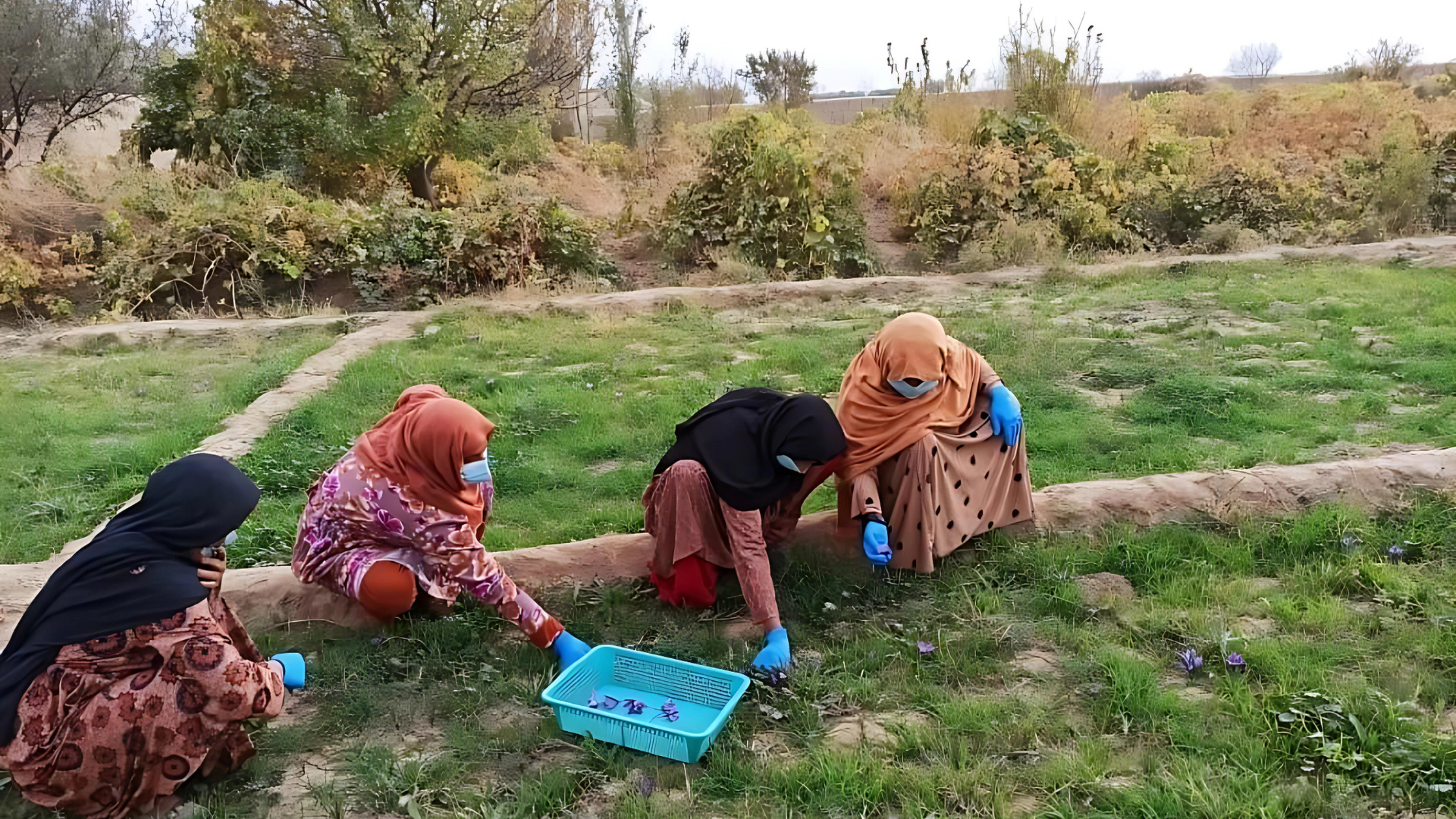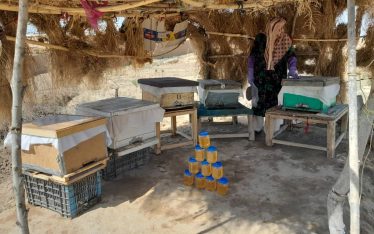In the nature of Adina Village, nestled within the Char Bolak District of Balkh Province, Roshan Gul, a resilient 44-year-old woman, stood as the pillar of her family’s livelihood. With a family of 15 members, including her husband and ten children, Roshan’s journey was one of determination and hope.
She shared, “Through farming, we make a living. Previously, we used to cultivate seasonal crops like cotton, wheat, and barley. After harvesting, we would spend the money earned on family expenses. In the last years it was difficult to get profit as we faced lack of water and lot of other disasters by climate changes. Fortunately, for about 2 years now, alongside other crops, we have also been cultivating saffron. Through the sale of saffron products, our family’s income has increased and we managed the lack of water and other weather changes.”
Despite challenges, including the ban imposed by the de facto authorities affecting her daughters’ education, Roshan remained steadfast. She emphasized, “Except for my three daughters, who are unable to attend school due to the ban imposed by the Islamic Emirate of Afghanistan, the rest of my children continue to go to school and pursue their studies.”
With farming as their primary source of income, Roshan harbored aspirations for the future. She articulated, “Currently, I don’t have any particular business aside from farming, but in the future, I plan to establish a business either through saffron cultivation or trading saffron products, not only for myself and my family but also to create opportunities for other women in the village.”
Participation in the saffron cultivation program, through the Red Gold project, by HIHAO, sparked hope for Roshan and her community. She envisioned, “In my opinion, the saffron cultivation project (Red Gold) will bring about positive changes because the yield of this plant increases year by year. In addition, the corms of the saffron plant will multiply significantly, even four or five times more than the previous year, after four years. Consequently, after four years, we can cultivate saffron on more land and achieve good yields, transforming into established saffron farmers.”
Through training and guidance of local trainers, Roshan embraced newfound knowledge. She reflected, “In the first year, we were not familiar with saffron cultivation because it was a completely new plant, and people in our village had not cultivated it before. Therefore, we lacked knowledge about cultivating this plant. Fortunately, after one year, we gained very good information and experiences regarding cultivation methods, irrigation, flower harvesting, drying, processing, and packaging of saffron.”
With each challenge overcome, Roshan’s confidence grew. She expressed, “Yes, now I realize that by mastering the steps of harvesting, drying, processing, and packaging saffron, I can establish myself as a successful saffron farmer. This will not only boost my family’s income but also allow me to generate employment opportunities for my daughters and even other women in my community.”
As her saffron cultivation journey progressed, Roshan celebrated milestones. She shared, “With effort and dedication, I managed to achieve better results this year compared to last year. This year, by irrigating my saffron field regularly and harvesting saffron flowers every day, I collected a total of 129 grams of saffron, earned 10,850 Afghanis.”
Looking ahead, Roshan’s ambitions extended beyond her own success. She voiced, “My wish as a mother is for my children to continue their education. Through this, they can achieve their goals and aspirations.”
Roshan Gul’s story epitomized the resilience and determination of women in rural Turkmenia, where hope flourished amidst challenges, and empowerment blossomed through saffron cultivation.



